If you haven’t already done so, please read the FFY Introduction.
May Overview
Here’s a breakdown of what we’re covering in May:
- What We’re Prioritizing
- Ordering
- Planting
- Harvesting
- Business Model: Weddings À La Carte
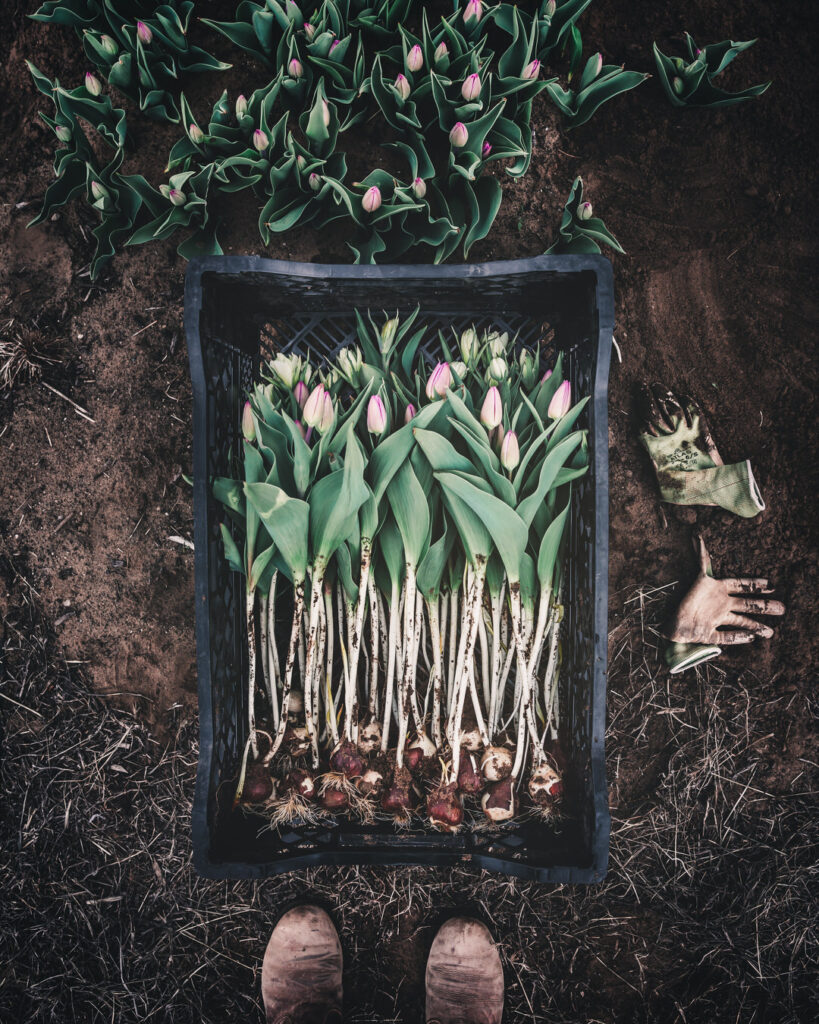
What We’re Prioritizing
Here in Zone 4 Wisconsin, May is an especially crazy time of year. The excitement of spring can quickly turn into overwhelm, as it seems that everything is simultaneously happening at once: Trying to squeeze planting in between constant tulip harvesting, weeding, bed prep, water lines, spring maintenance/cleaning, and oh yeah: selling, marketing, designing, and delivering the flowers we’ve worked so hard to grow!
Every year, I feel like I have a good plan, but it never fails that unexpected things pop up and it seems that everything takes longer than we think it will. If you’re in this boat too, know that you’re not alone. Some things won’t get planted, others will perish in their trays, and that’s OK (and completely normal . . . at least over here).
When overwhelm creeps in, I believe the best thing we can do is take a step back, prioritize, and focus attention on not only high-priority crops, but also what fills your cup. For me, that means the dahlias, lisianthus, and sunflowers. While our customers are not going to notice that I didn’t get around to planting statice, they sure as heck would miss lisianthus!
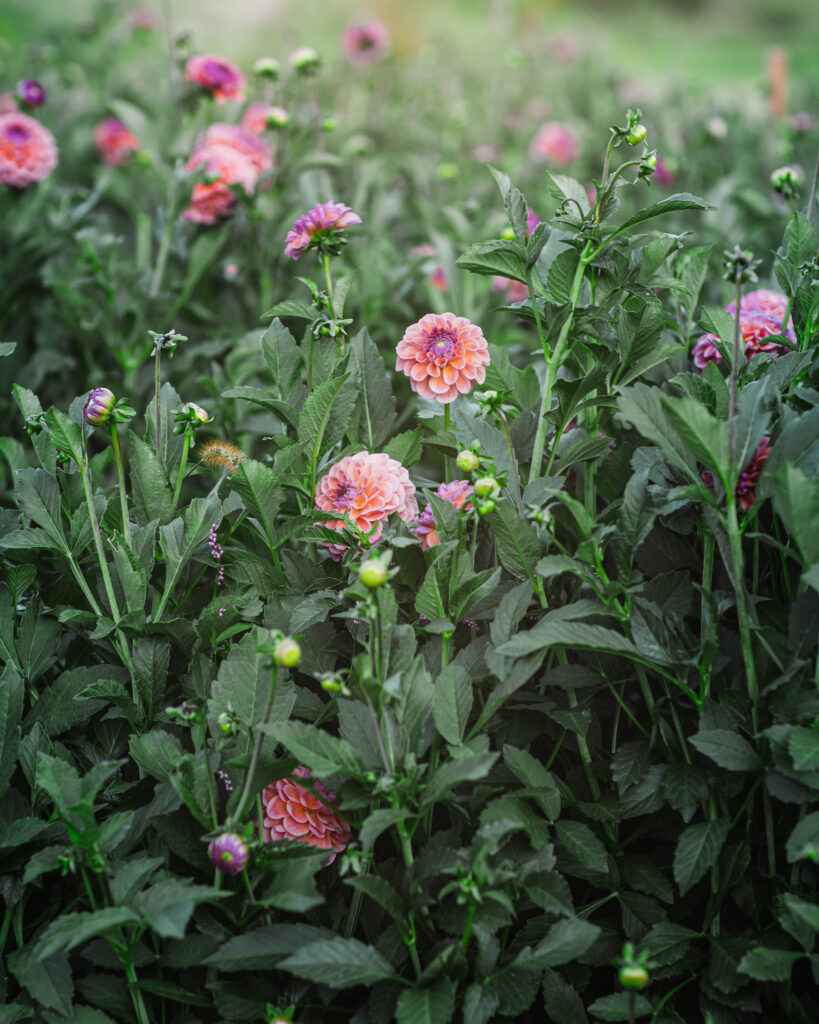
Dahlias
Dahlias are a year-round crop for us. What I mean by that is that while they are only in bloom for a few short months, they require our attention all year. We wrap up shipping tubers in May (the last orders actually went out this weekend, woowhoo). We also are focused on getting ours planted, not only for maximum bloom time, but also tuber production. While danger of frost in our zone has mostly passed by May 20, we’re also watching for rain in the forecast, as tubers are prone to rot.
But even the best-laid plans and intentions can go awry . . . even when you’re focused on your top priority! Over the span of last week and this week there was only one day that had 30% chance of rain in the forecast. Welp, we busted our butts to get some tubers in, and indeed we did, but that slight chance of rain turned into a torrential downpour. The next few weeks will be anxious waiting, praying that first batch (including some of my most super-rare varieties) somehow pull through and that the weather is favorable for the remainder of planting.
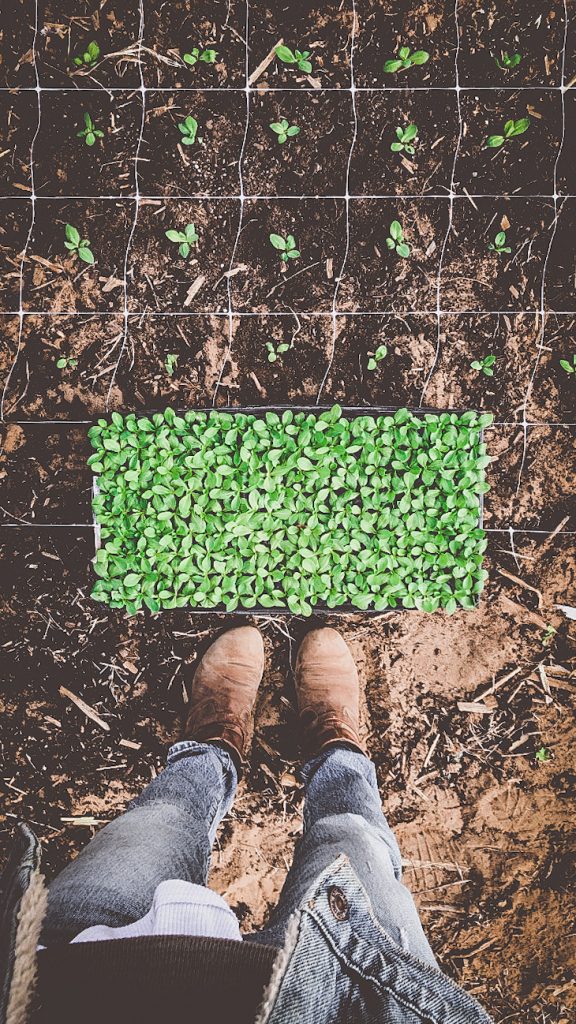
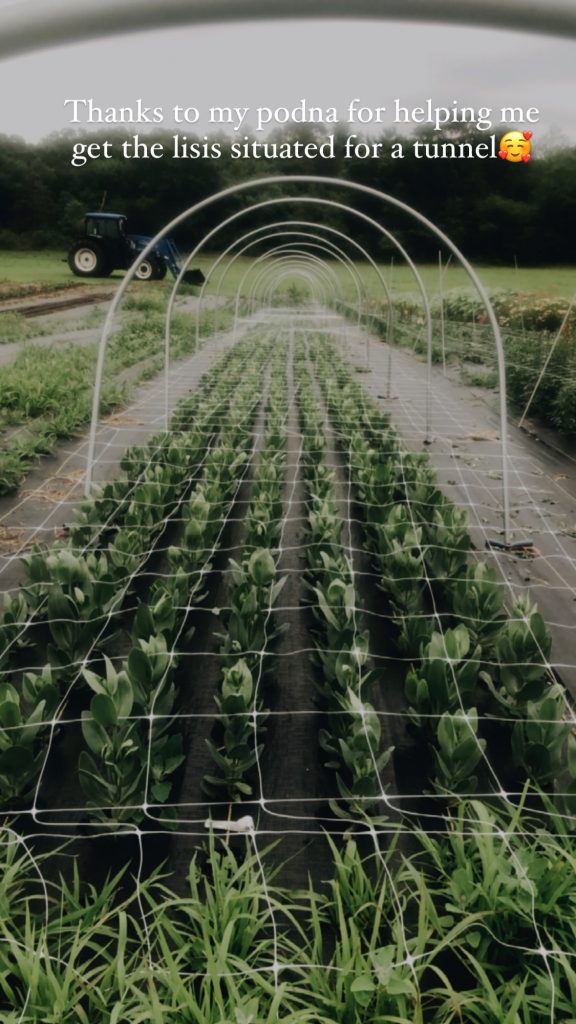
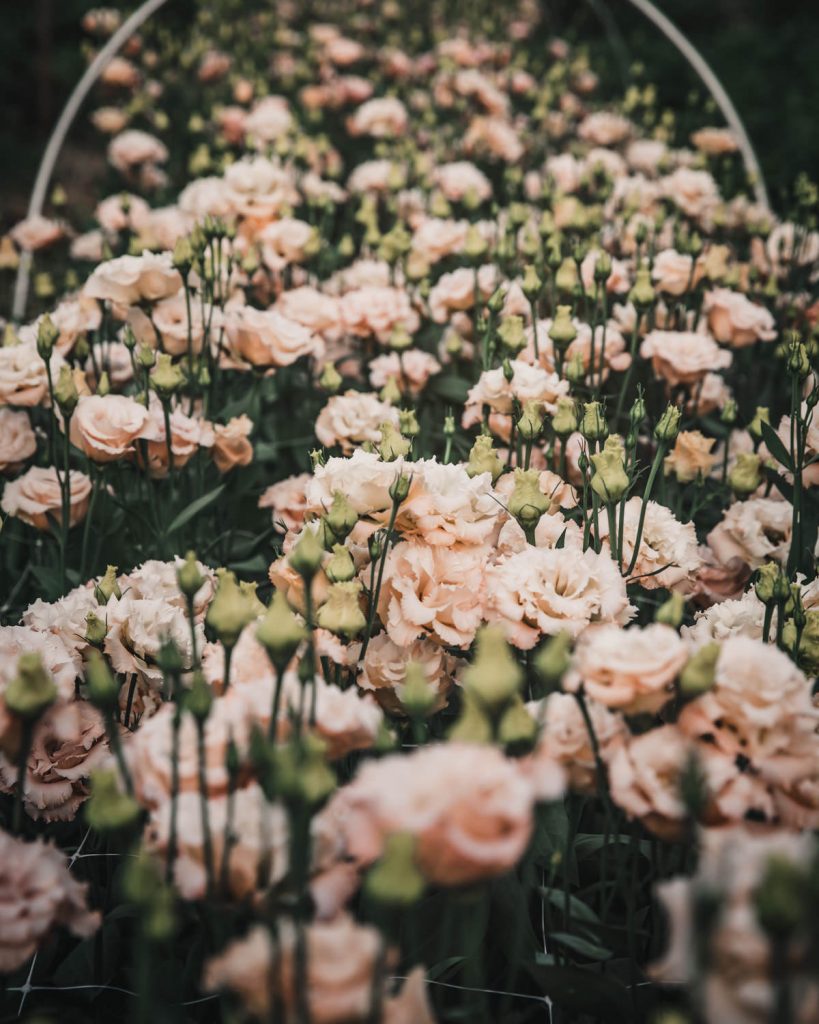
Lisianthus
The lisianthus also get a lot of attention this time of year. I spread out my plantings from April through May to have as continous of a bloom time as possible. So, we’re simultaneously caring for the already-planted lisianthus, while continuing to plant them. While I find lisianthus to be tough as nails, those tiny baby seedlings do require attention early on. They are so small, it’s important to make sure their roots are getting moisture. I often get emails and DMs asking what’s wrong with lisianthus seedlings, and more-often-than-not, they are not getting enough moisture. Very early on, drip tape usually is not enough. I recommend running the waterlines, but also overhead watering with a hose/rainwater nozzle for newly-planted seedlings. The other thing to stay on top of is the weeds. Lisianthus are so little, they can get choked out by weeds quickly (even in landscape fabric).
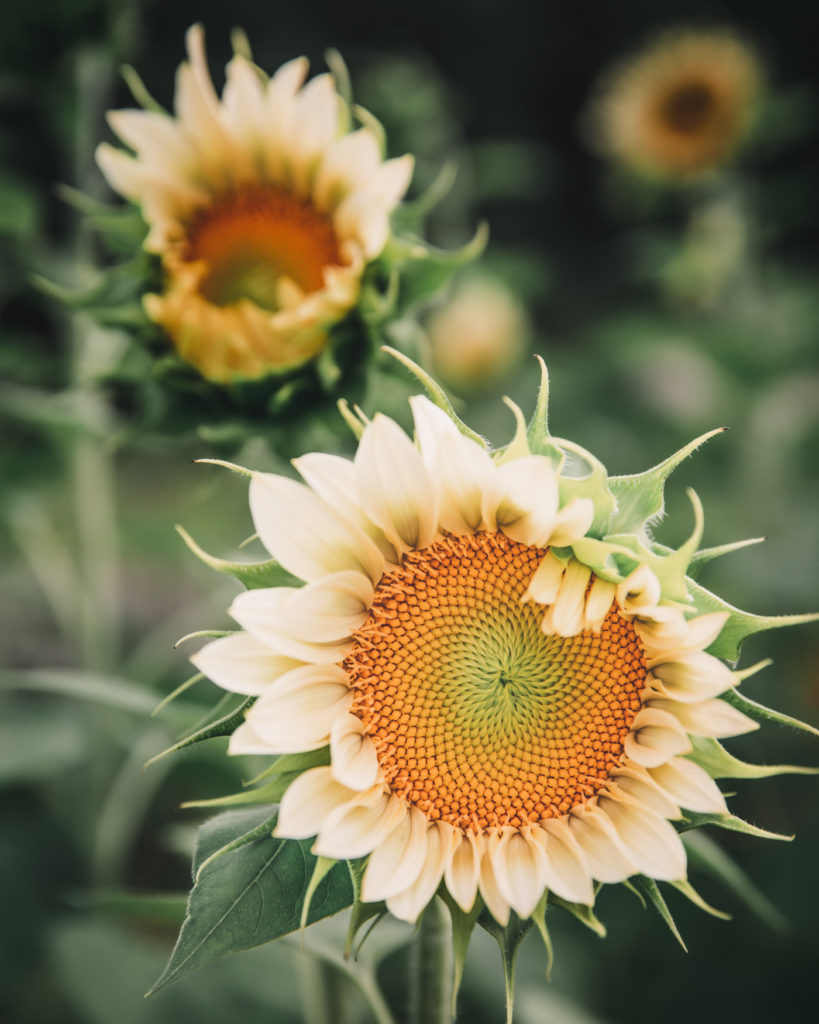
Sunflowers
Totally guilty of not taking my own advice here, but keeping up with sowing sunflowers is an easy win. Sunflowers are so easy to direct sow, you’ll certainly thank yourself later. They’re incredibly easy to harvest, ensure you have focal flowers, and quickly bulk up a bouquet.
But Also: Prioritize What Fills Your Cup
Even though it means some things may bite the dust, I’ve found it is so important to also prioritize what fills my cup. That might sound obvious or cliché, but giving myself permission for that has been tremendously helpful for recharging my batteries. We give so much to our businesses because we want them to succeed, but we also need to find joy. For me, that’s my little kitchen garden and photography.
We recently spent an evening fixing the arbor that goes into the kitchen garden and put up a little make-shift fence around it, so that the chickens could not get in it. I haven’t planted it yet, because we moved our coop to keep them out of the high tunnel and flower beds, but that meant they basically moved into my little kitchen garden (eating my perennial herbs, ugh). We were laughing about how there are literally a million other things that we should have been doing, but you know what? I love this little space. I love taking a break during a hectic work day in front of the computer and going out there to pick something for dinner. It brings me peace and joy, so other things can wait. I hope you can allow yourself whatever fills your cup as well.
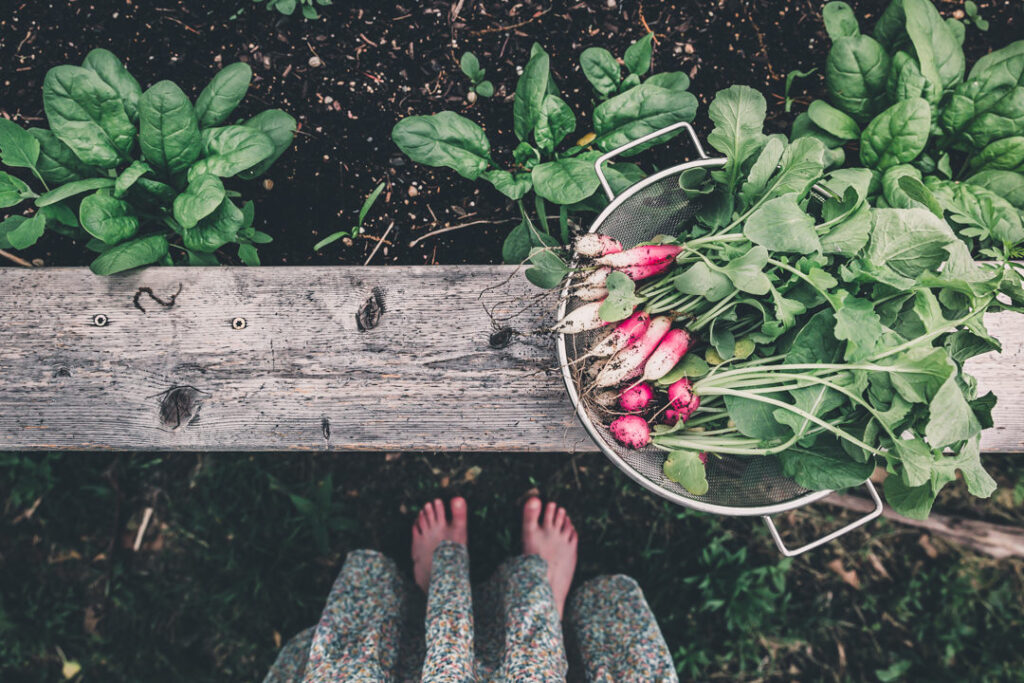
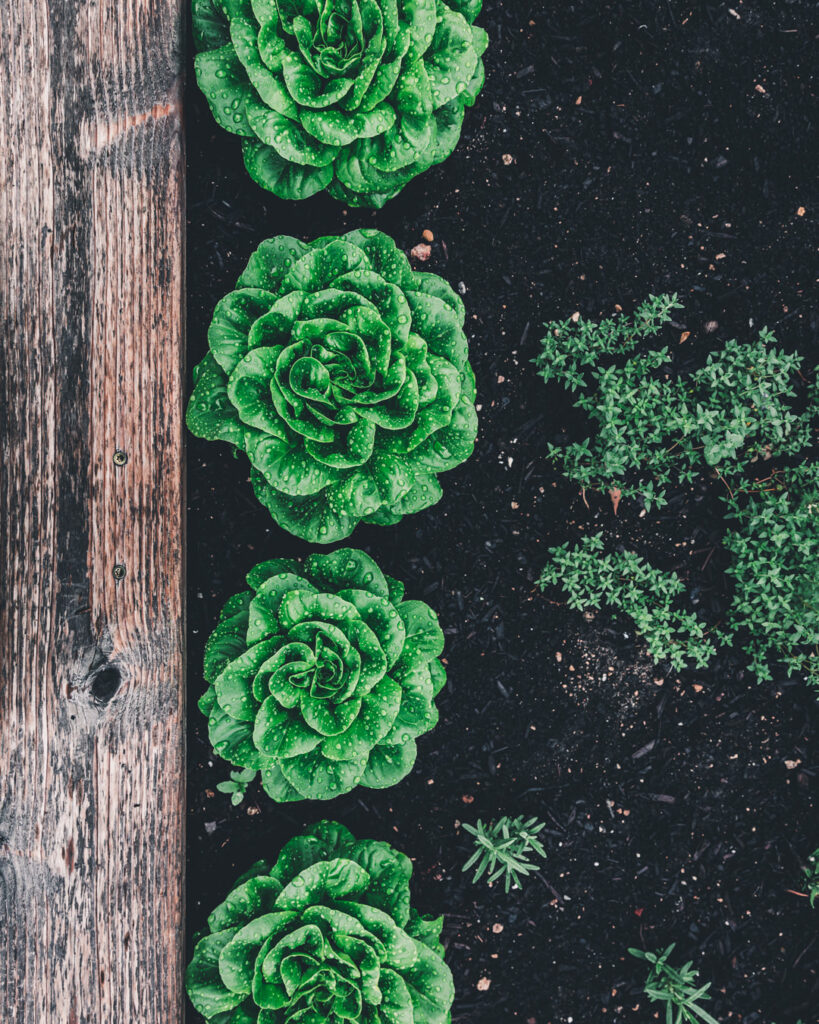
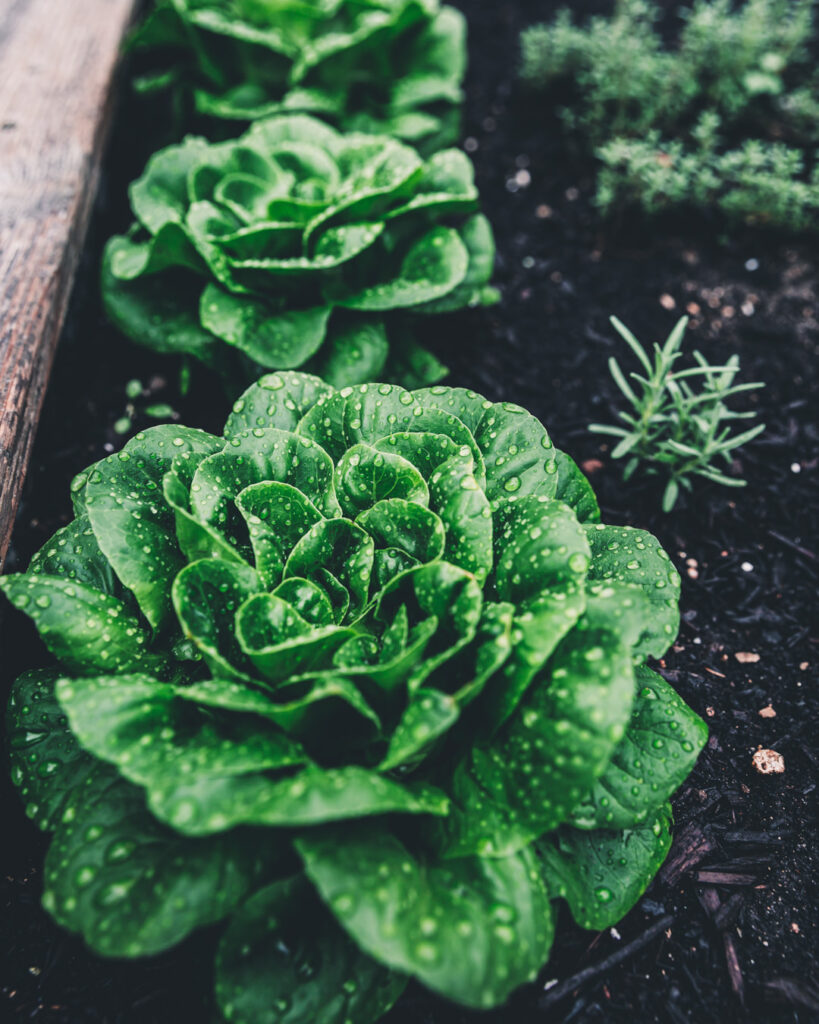
Remember the Compound Effect
The Compound Effect is the principle of reaping significant rewards from a series of small, smart choices. It’s easy to think that the free 45 minutes you have before work is not enough time to get anything done, but whenever I take that time to accomplish something (even just weeding), I’m always surprised how much I can get done in a small amount of time. And these small wins compound over time. Even if you have a small break in your day, don’t chalk it up to not enough time to accomplish anything significant. It might seem small in the grand scheme, but if you do it every day. it adds up.
Ordering
I’m not really ordering much this time of year (win!) other than random things we’re running low on (hello, mason jars and flower food). And OK, fine, I may have ordered a few more dahlia tubers and cuttings 🙂
Planting
As noted, our main focuses are dahlias, lisianthus, and sunflowers. Everybody else fills in as time allows. My general rule is that any cool crop that hasn’t been planted by end of May gets the boot and any summer annual that has not been planted by end of June gets the boot. It’s not ideal, but it happens (friends and family often take them . . . I gave away loads of tomato seedlings last year, ha).
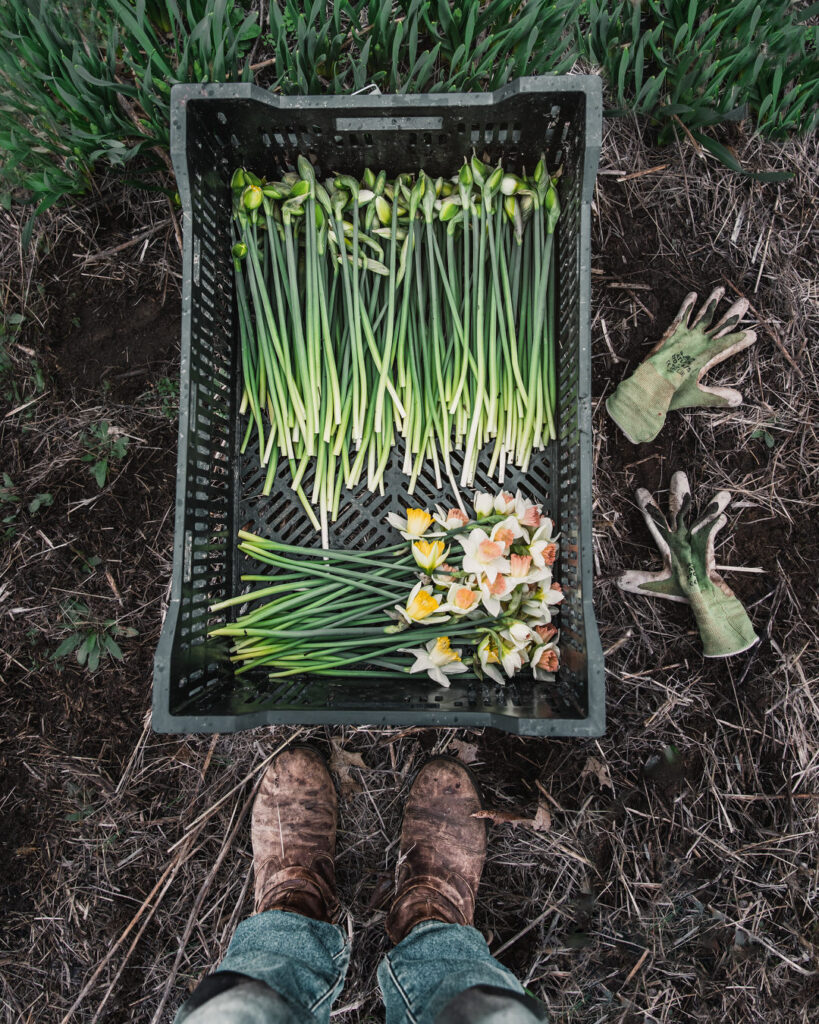
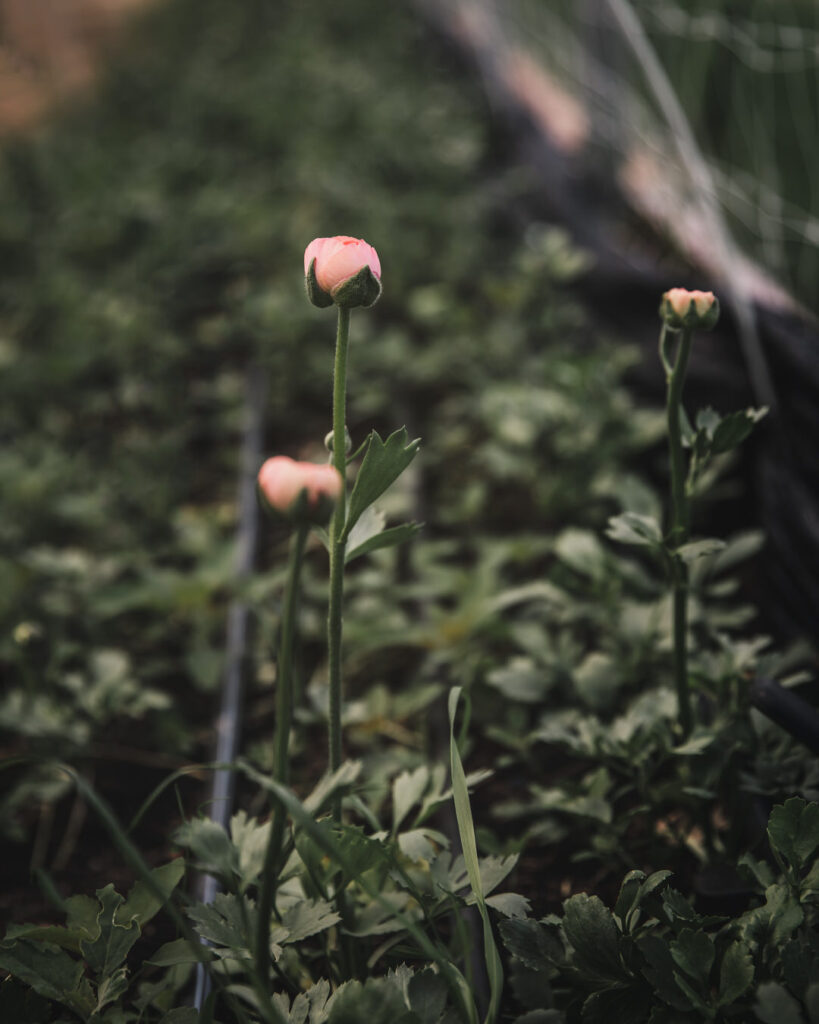
Harvest
The most time-consuming crops we’re harvesting this time of year are tulips and narcissus. The tulips are the most labor intense, because they require a bit of soil loosening with a pitchfork in our soil (but they’re pretty quick all things considered). They require a bit more post-harvest prep than narcissus with their bulbs still attached in storage. However, both need to be harvested at the correct time: Tulips typically at cracked bud when they start to show color, and narcissus at gooseneck stage. Sometimes, we’re harvesting multiple times per day!
We’re also harvesting other spring bulbs like muscari and fritillaria. A ton of my muscari bloomed weeks before a wedding, but in all my books, I could find very little on storing it! So, I asked the gram 🙂 Shout out to Rebecca from Moonshot Farm who told me that they harvest with the bulb attached for up to 6 weeks! I was so excited . . . and honestly, the farming community is truly the best on social media in my humble opinion. Her tip worked beautifully, and I was able to use muscari in all of the wearables (bouts, bracelets, hairpieces, flower crowns).
And hallelujah, we started harvesting ranunculus and anemones! If you’ve been around, you now that I have an overwintered ranunculus and anemone trial going on in the high tunnel. At this point, I honestly cannot say that the overwintered ones are any better than the spring-planted ones (though perhaps *slightly* earlier, more-so with the anemones). However, this could be due to the incredibly tough spring we had (in one week we hit 90F and then it snowed 20 inches). The heat was a struggle, then the snow barricaded the sides which made venting extremely challenging. Water was also a challenge, as well as the mice eating hundreds of corms. The experiment warrants repeating, but I’ll share all the details in an upcoming month. Prior to this year, ranunculus and anemones have not been a stellar crop for me, but these babies actually have some respectable stem length.
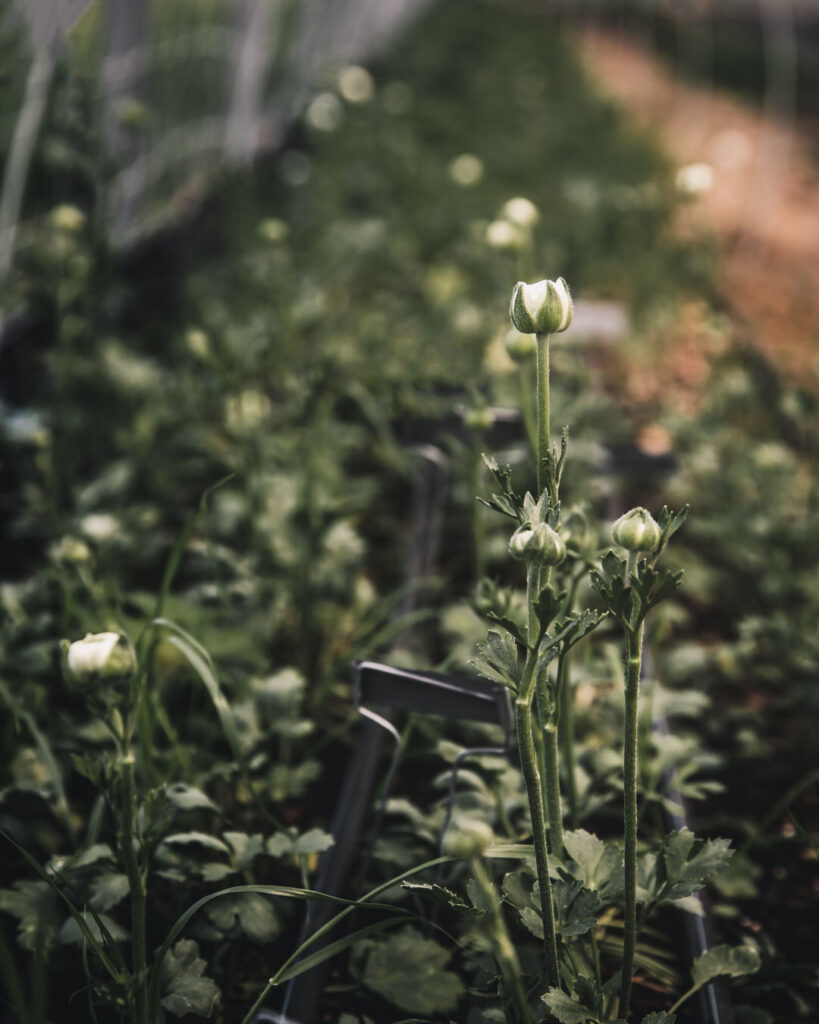
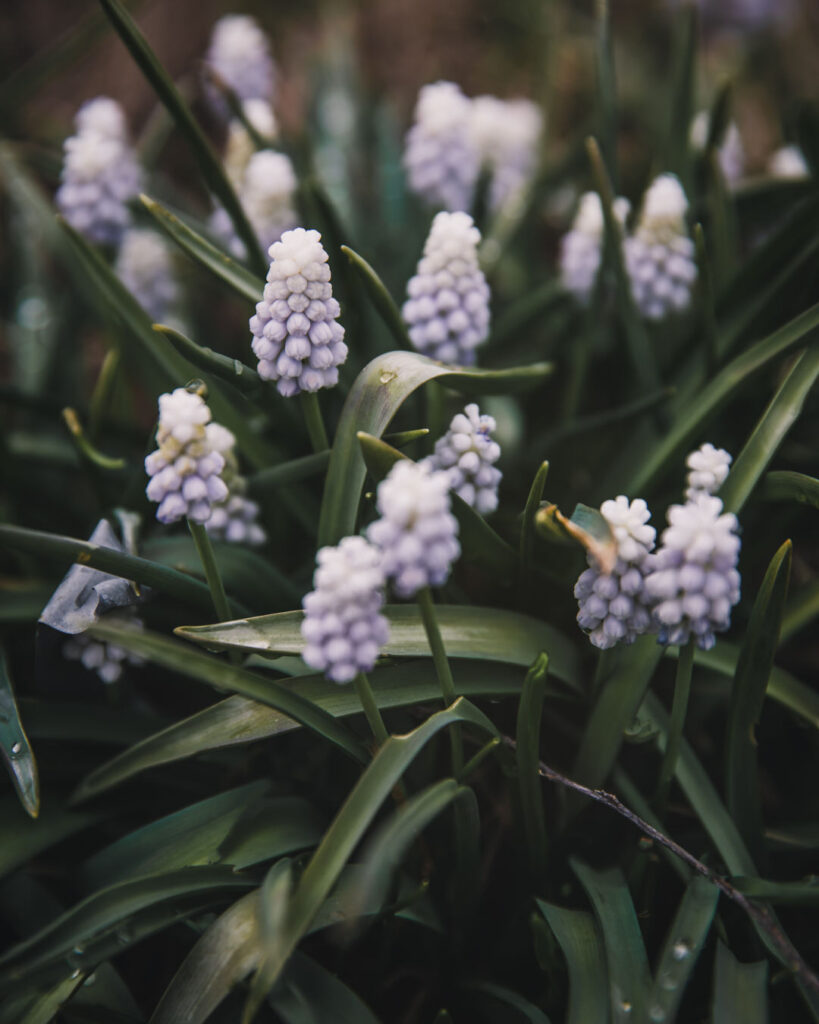
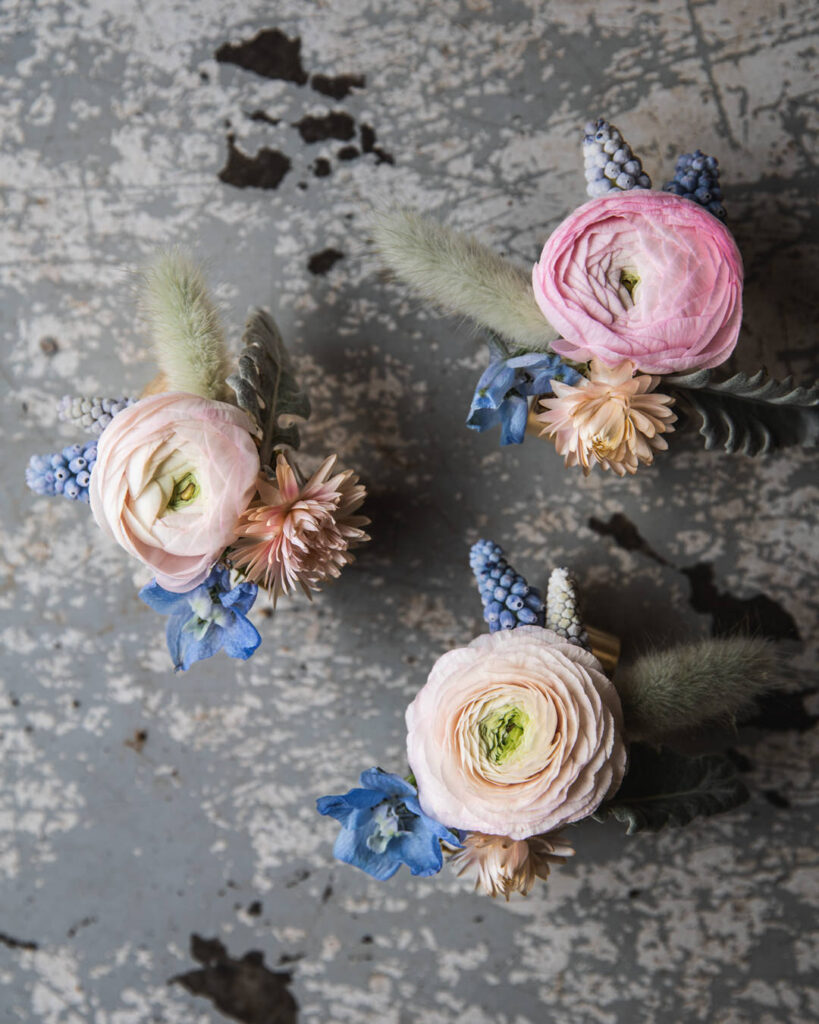
Weddings
Speaking of weddings, I thought May would be a good month to touch on weddings as a business model. Here I’ll share my personal thoughts on weddings, some helpful tips I’ve learned along the way, and then share our À La Carte Wedding Packet with you.
Weddings can be a lot to take on when you’re just getting started, but they are one of the most profitable revenue streams for a flower farm. That said, profitability is not the only thing to consider when taking on weddings.
As with any business model, first is understanding both your strengths and weaknesses. Are you confident in your growing skills and design work? (if the answer is no, that’s OK, tips below). Are you able to communicate clearly and directly with potential clients? Do you enjoy learning new things? Are you comfortable saying no? Do you have the time to dedicate to wedding work?
Here is how some of this has played out for me. I am not (yet) super efficient at arranging flowers, whether that’s a $25 mason jar or a $150 bridal bouquet. I’d rather create a higher-dollar product. I truly enjoy the design process, even though it is a complete work-in-progress for me. I enjoy learning about it and dedicating time to improving my craft. I don’t (currently) have time for full-service weddings, but I’ve found À La Carte Weddings to be manageable (more on this below). I would hate consultations, so I keep everything streamlined and communication is very clear from the start and is entirely over email. If we’re not a good fit, I turn down weddings (I also turn down weddings simply because I can only take on so many . . . however, I always recommend other flower farms or florist friends). For me, they are worth it, but they are a lot of work, take quite a bit of planning, and are a bit of a higher-stakes endeavor than delivering mason jars.
Here are a few things that I’ve learned along the way that have helped tremendously:
Wedding À La Carte
I learned about this model when taking the Floret Workshop, and I took a lot of what I learned and applied it to our farm. Think of Weddings À La Carte as a happy medium between full service weddings and bulk DIY bridal buckets. The farmer-florist has predetermined options and prices, the couple creates their own package, the farmer-florist creates the pieces but is not responsible for setup or takedown.
In our case, there are no consultations, and we do not accept requests for specific flowers. We will design each piece with the couple’s color palette and style in mind, but artistic direction and flower selection is entirely at our discretion. Our communication is super clear, so that we are ideally attracting the right clients and repelling the wrong ones, but also setting expectations on what our couples can expect from us. I handle communication via email, and send our À La Carte Packet to get things started. Typically, this has all of the information that couples need to decide if we’re a good fit for one another. You can view our packet here. P.S., I created it in Canva using this template if that interests you. After that, proposals, contracts, and invoicing are through Honeybook to keep things streamlined (more on that below, but if you want 55% off your first year of Honeybook, use this link).
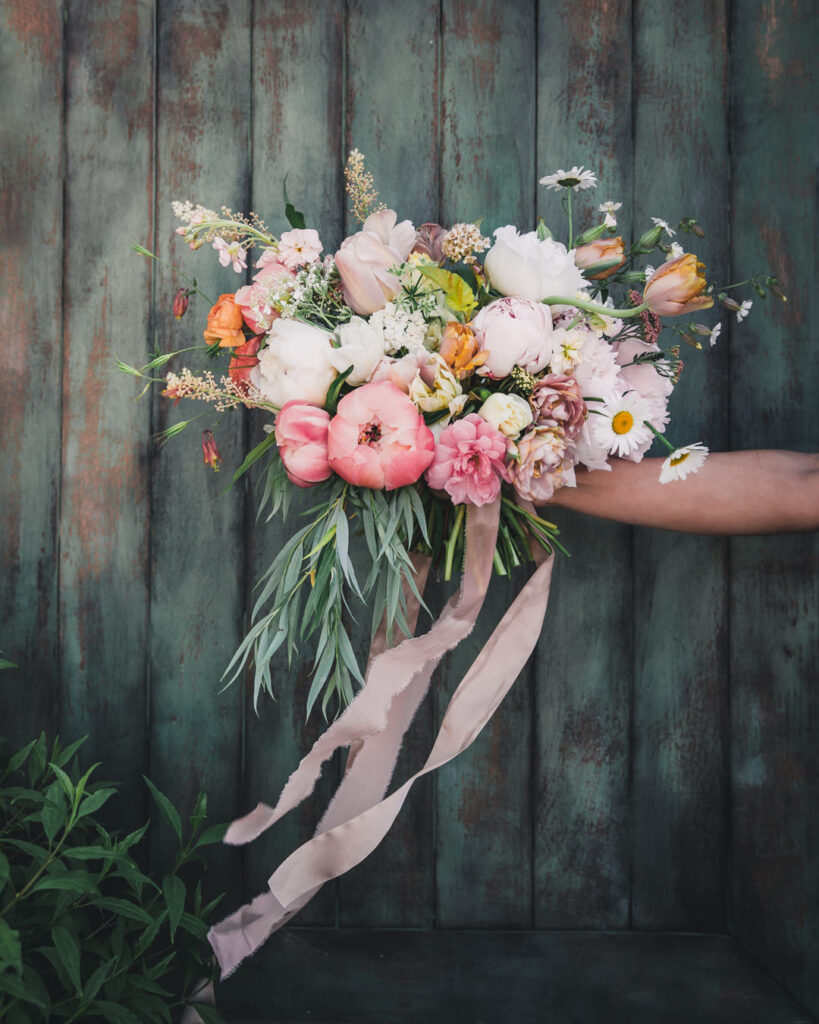

Create Wholesale Accounts
To keep costs down and for peace of mind, I highly suggest creating wholesale accounts, both for materials (vases, mechanics, etc.) as well as flowers. For vases, I love love Accent Decor. Having wholesale accounts for flowers is also incredibly comforting. If you’re just getting started, I’d rather err on the side of caution! Someone’s wedding day is high stakes, and I would rather have too many flowers than not enough. If you’re not as confident in your growing skills or timing, having a backup plan is worth it.
I used to let my ego get in the way of this, wanting to provide only flowers that I grew. Now, providing beautiful flowers for my client is priority number one. This does not mean that I take requests to order in specific flowers. I plan the designs based on what will be in season our farm, and ideally, they are 100% sourced from our farm. But if I know I won’t have a certain color or if there is a crop failure, I now have options.
And guess what? Those options include supporting other flower farmers! I have a wholesale account with Sunny Meadows Flower Farm. They post their availability a few weeks out, and you can order pretty dang close to your event if needed. I also have an account with Farm Exports and my rep is a gem. I’ve created a wholesale account with the Little Farmhouse Flowers, but I have not ordered yet. I also have plans to set up an account with the Floral Source who sources American-grown farm direct (recent find on insta). These are all great options that give peace of mind. I love supporting other growers, plus it’s educational to see what other’s quality/prices are at.
It’s also a good idea to connect with other growers and florists in your area (if they are open to this). Not only do we refer clients to one another, we can reach out if we are short on flowers. In my experience, this relationship has worked both ways and has been a great benefit.
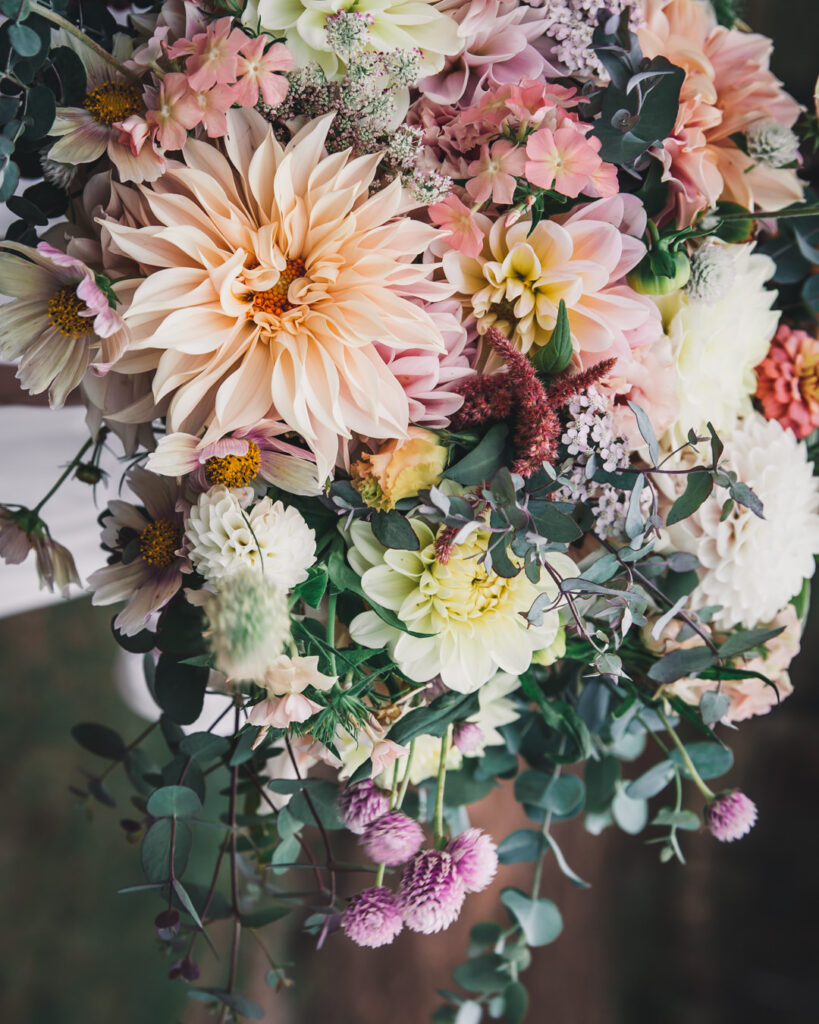
Start Small
If you’ve been around, you know my typical advice is to follow your heart. If your heart says “go big” I say, GO BIG! Plant all the things! Weddings are one area I truly believe in starting small. Weddings can be stressful and harvesting, processing, AND designing the flowers requires patience and time. Start small if possible, a bridal bouquet and a few centerpieces.
Invest in Your Craft
If you want to make it in the wedding world, you must invest in your design skills, whether that’s investing time to practice, education, or both! I have taken courses and/or devoured books from Gabriella Salazar, Rachel Lunghi, Kiana Underwood, Sue McCleary, and Ariella Chezar. I highly recommend all of them, as they all have had a tremendous impact on me and my work. These people are pros and have amazing tips!
Streamline
While growing and sourcing flowers is not perfectly streamlined for me, I prefer it that way. I think of it much like a chef, ebbing and flowing with what’s available and at it’s best. For example, I will even forage the forest here if something like the perfect pastel wild honeysuckle is in bloom.
However, everything else is streamlined, from communication to vases to ribbon. Anyone who is interested gets an email with our packet. If they decide we’re a good fit, I create a proposal with their selections in Honeybook. While Honeybook is paid, I love it and also use it for client photography work (and if you’re interested, I do have a this referral link which gives you 55% off your first year). Everything is templatized, so when I create a project everything from the invoice to the contract is populated with each new client’s pertinent information.
While the screenshots are not perfect, here’s what a typical project would look like (there are also numerous templates to choose from, so different types of projects can have different templates, like weddings vs events, etc.)
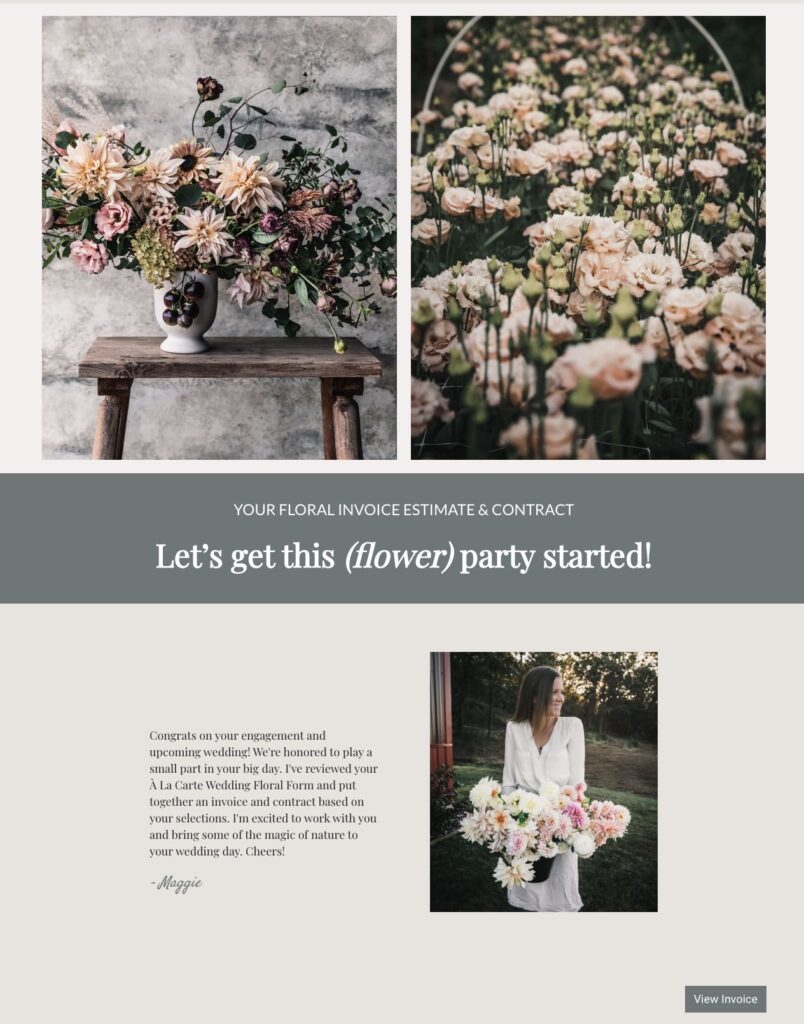


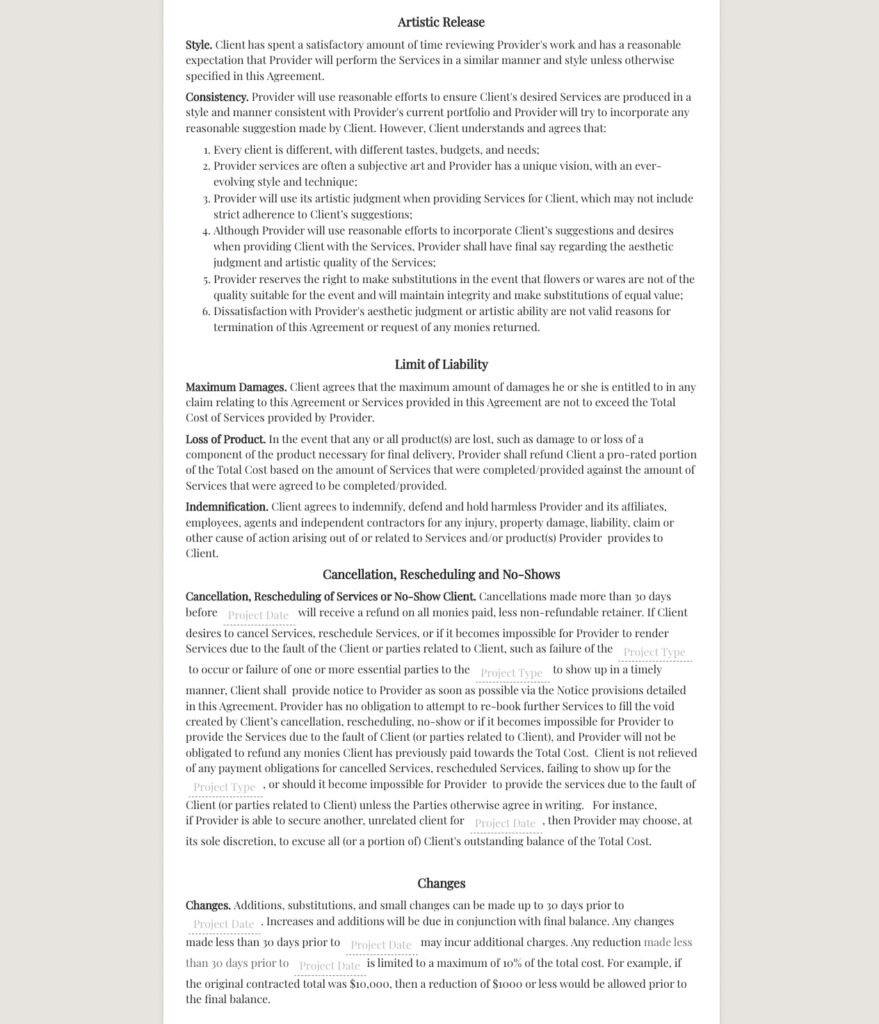
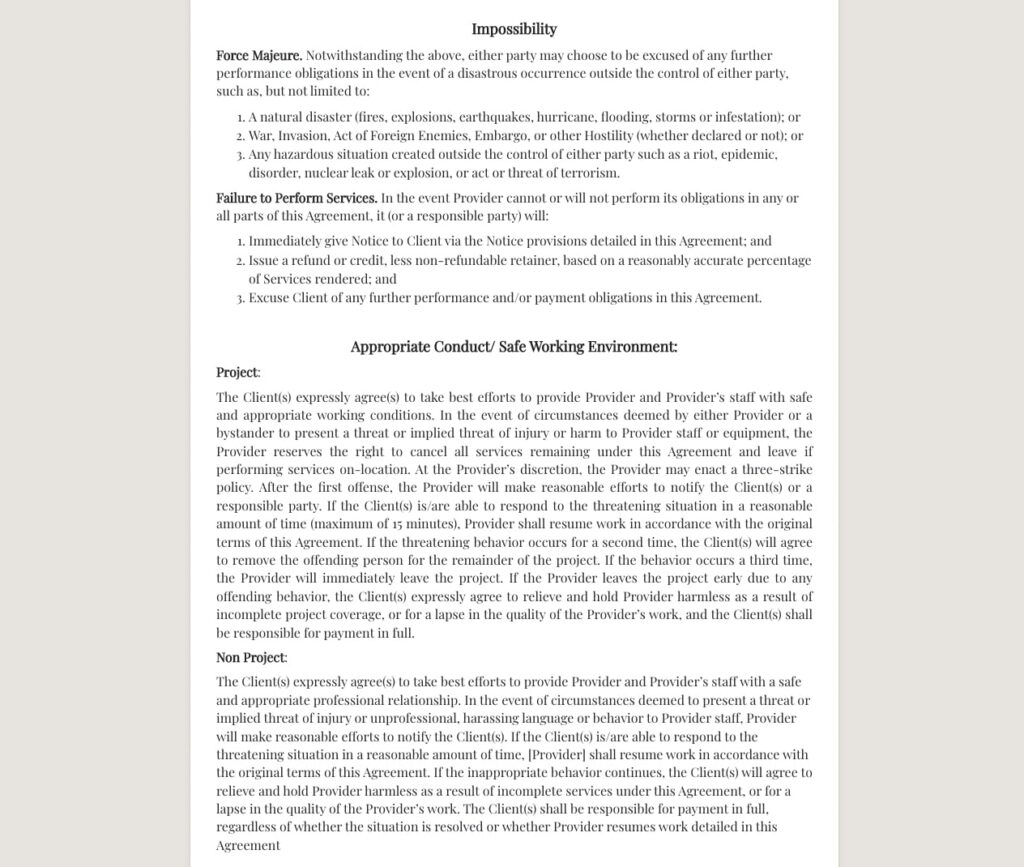
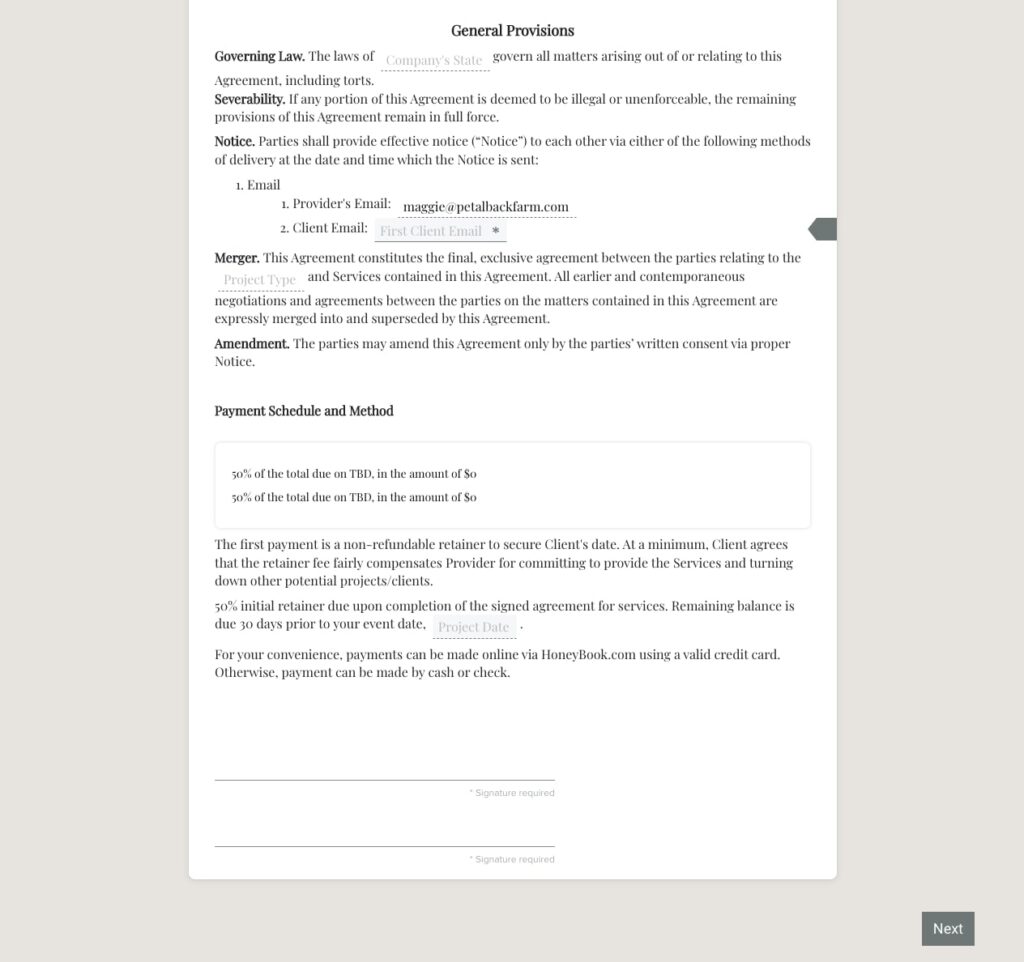
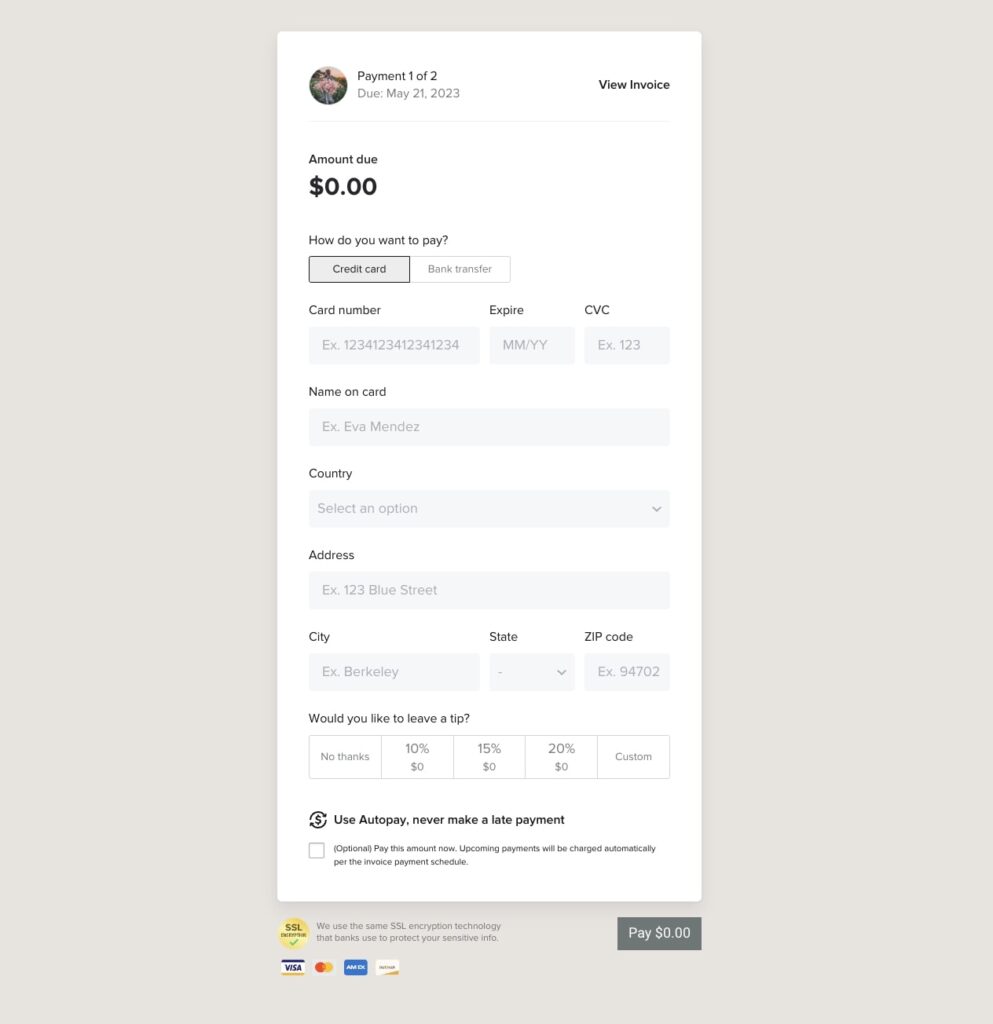

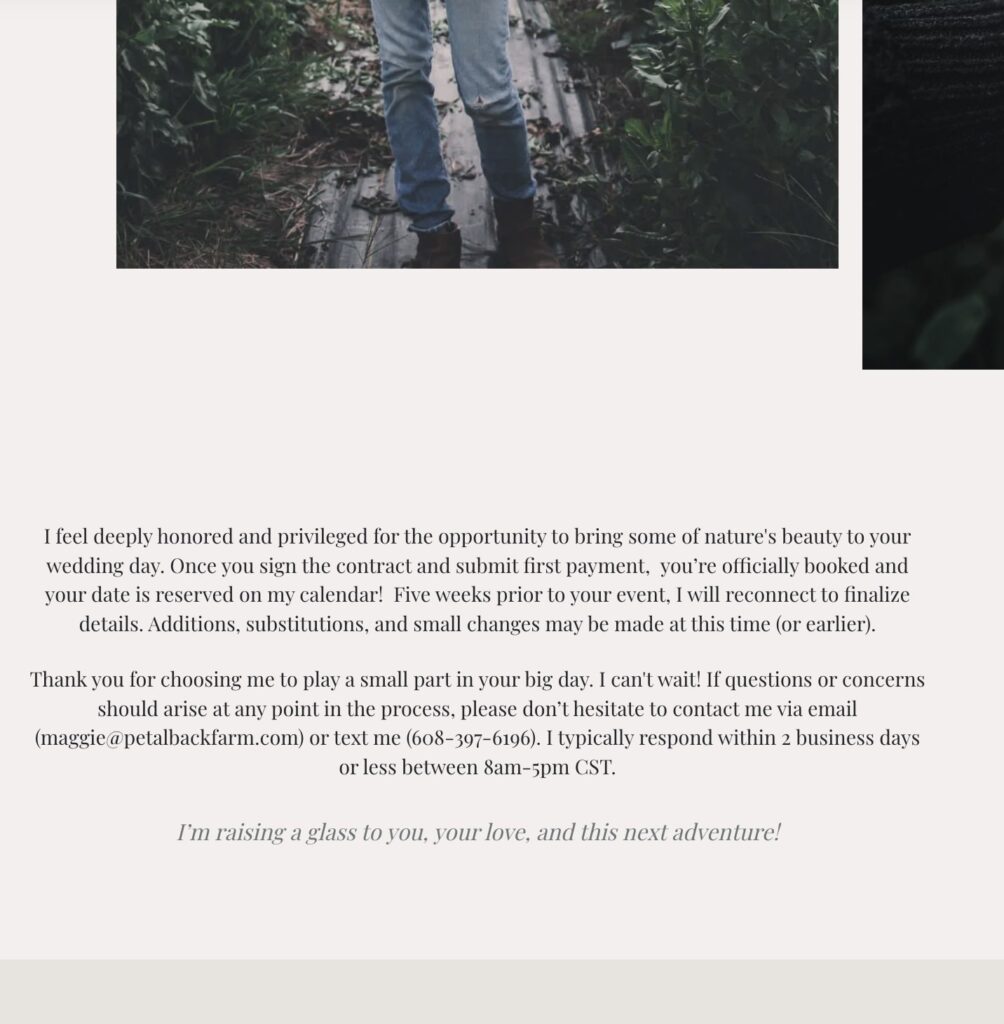
I also have standard vases from accent decor, ribbons from Tono & Co, and pretty much everything else comes from Amazon and is here on hand (floral tape, wire, twine, pins, bout magnets, etc.). For bud vases, I stock up on little glass jars in various sizes from Hobby Lobby whenever they go on sale.
Favorite Supplies
- Vases: Accent Decor (love the Laney, Lyra, Winnie, and Benoit series)
- Bud Vases: Local Hobby Lobby (often where I find jars or vases for transporting bouquets as well)
- Ribbon: Tono & Co and Amazon
- Metal Cuffs for Corsages: Jan’s Jewels
- Bouts: Magnets
- Crowns: Base, wrapping
- Crowning Glory
- Hair Combs
- Floral Adhesive
- Waterproof floral tape for wrapping wearables
- Floral tape for vases
- Wire for wiring individual flowers, wire for wrapping
- Twine
- Turn table for designing centerpieces
- Other mechanics: Chicken wire for local farm store and floral frogs from Michaels (there was a big sale last year that beat wholesale prices, so I stocked up)
- Seminole Delivery System
- Air-tight bins for hydration chambers
Plan for Adequate Time
Weddings, at least in my experience, take up more time than you think. The first big wedding I ever did, I though I planned more-than enough time, and I *still* ended up pulling an all nighter. I have not done that since college and I don’t recommend it, HA!
Here is what a typical wedding timeline looks like for me: if the wedding is on Saturday and they are getting their flowers Saturday morning:
- One month before: Check in with couple, discuss any potential changes, final payment. Order any vases, wares, transportation, mechanics, if necessary.
- Three weeks before: Monitor crop progress, consider wholesale ordering if needed.
- Two weeks before: Take inventory of all wares and mechanics needed for order.
- The week before the event (assuming a Saturday wedding, flowers delivered or picked up Saturday).
- Sunday–Tuesday: Harvest, prep vases and mechanics
- Wednesday: Typically when wholesale orders are delivered, unbox, fresh cuts, hydrate.
- Thursday: Process any remaining flowers. For wearables, prep flowers and place in hydration chamber via Sue McCleary method (google it, there are free videos). Design and assemble any flowers that will be in water (centerpieces, bud vases, etc.)
- Friday: Bouquets and wearables (bouquets will be placed in jars without their ribbon to drink water and wearables will be put back into hydration chambers once created).
- Saturday: Pickup or delivery
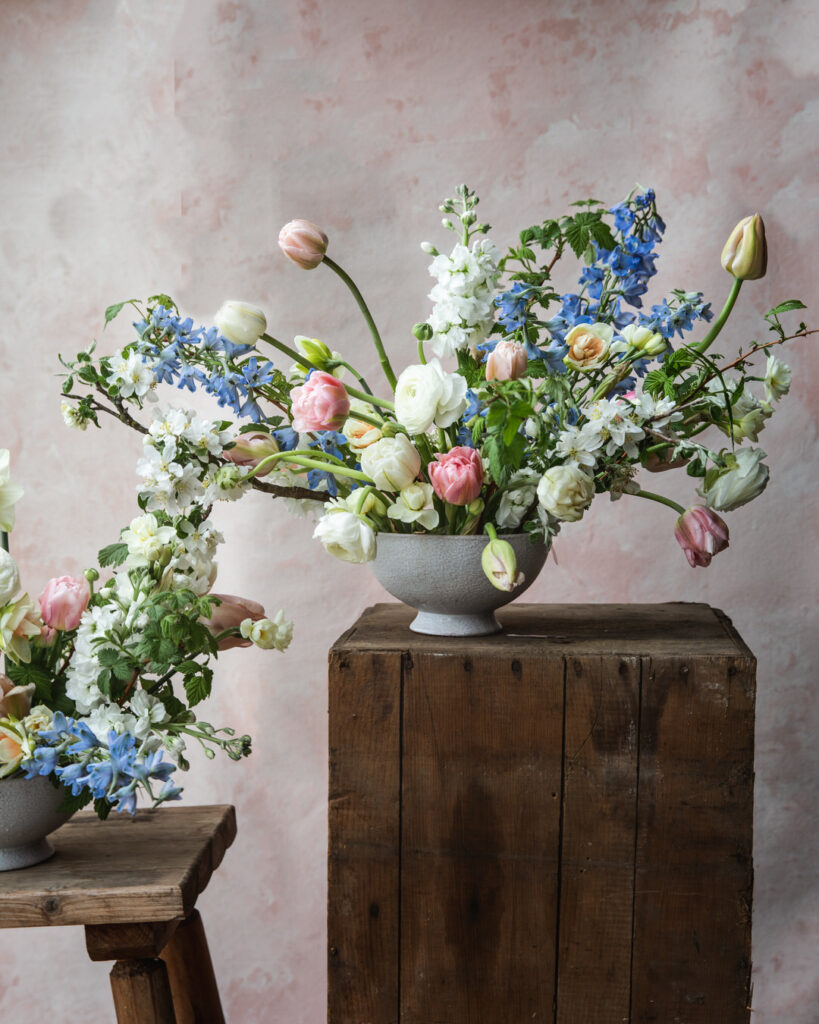
Wrap Up
OK, my friend, that is IT for May. What do you think? Did you find some useful nuggets? Is there anything that’s unclear or you wish I would have covered?
This link will be live until the end of June, at which point you’ll get a PDF copy, so you can always refer back it. You can also use the buttons below to save this as a PDF or print at any time.
Tip: use the find shortcut (Ctrl+F on a PC or Command+F on a Mac to search for any word or term either online or in PDF format).
Have any questions or something you want to share with me or others? I know I say this ad nauseam, but I truly believe in the power of the collective and that we all have something unique and powerful to share, so please leave a question or share a comment below. We’re all better for it, and I thank you in advance!
Cheers pal!
comments +